Ali Silverstein’s process is inspired by BDSM dominatrix sessions. Her practice seeks to legitimize spontaneous unwarranted desires. Her immersion in the culture resulted in a series of collage paintings that were presented at Albertz Benda last winter. Whitewall met with the young Los Angeles–based artist to learn about her impulsive yet very elaborate painting process.
WHITEWALL: Can you tell me a little about the show you presented at Albertz Benda late last year, “To Put on the Edge, a Table” (October 27—December 17, 2016)?
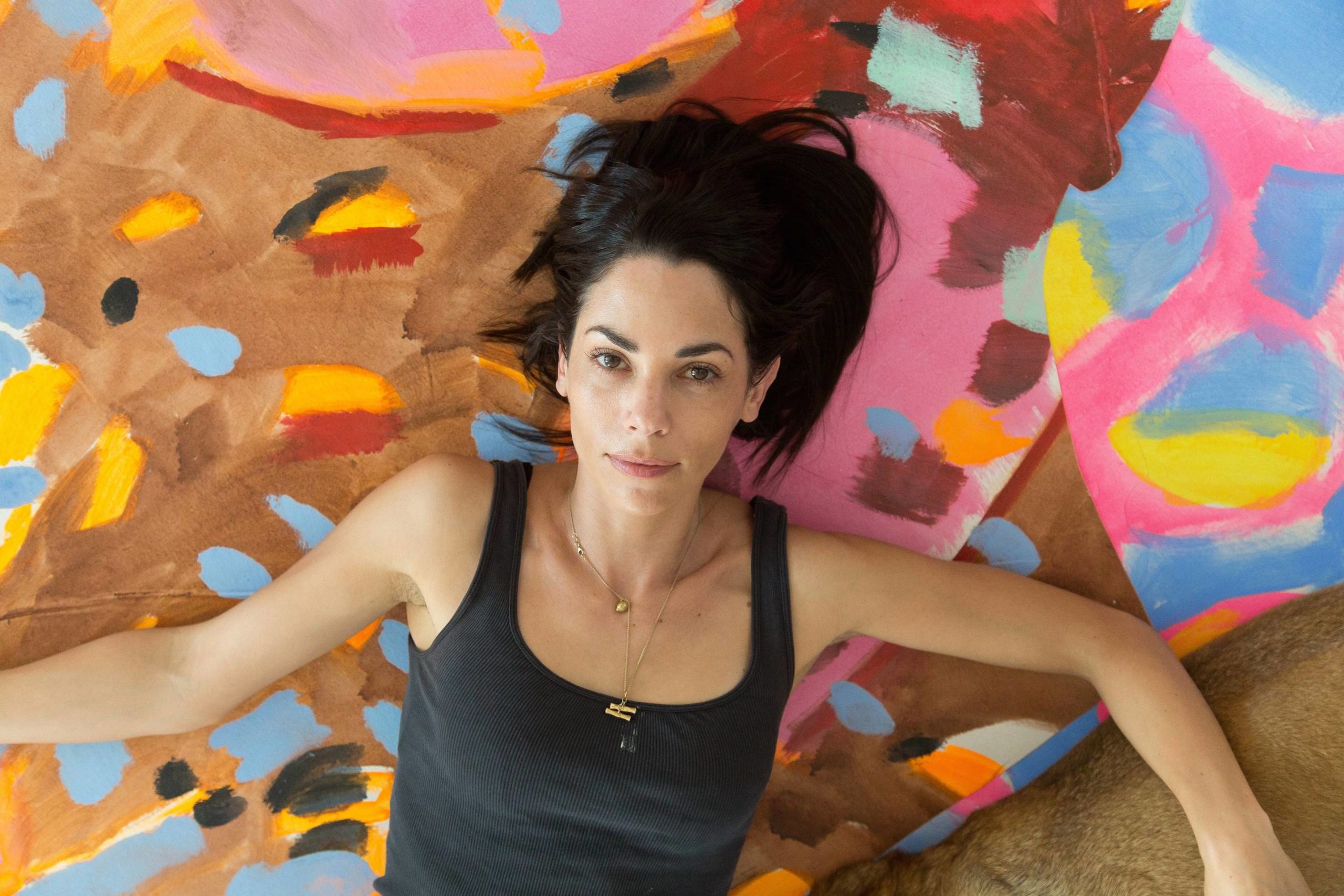
Photo by Christopher Burke, courtesy of Albertz Benda and the artist.
ALI SILVERSTEIN: This particular work has evolved out of a show in December 2015 for Untitled, Miami. I met this woman at the show and we had one of those totally see-eye-to-eye conversations about process. I later found out that she was the highest-paid dominatrix in the world and that there was an incredible overlap between what she was teaching people in terms of power dynamics and what I was doing with my work, which was to essentially try to have this kind of spontaneous in the moment freedom with gestures of mark-making.
WW: What do you mean by “free gestures of mark-making”?
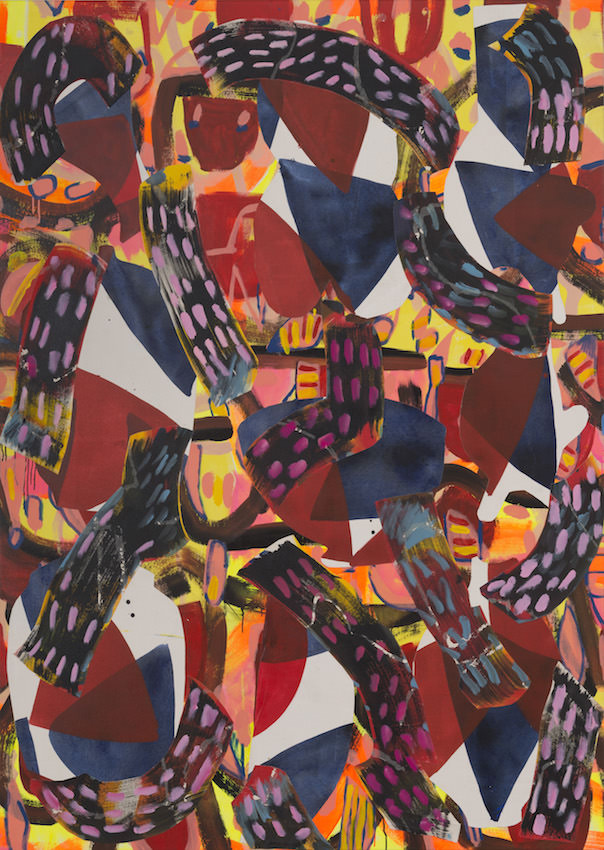
Ali Silverstein
September 19 2016 (Red and blue vessels on pink and fluorescent yellow)
2016
Acrylic and canvas on canvas
80 1/4 x 65 inches
Courtesy of the artist and Albertz Benda
Photo by Adam Reich
AS: To start with no premeditation or preconception. To just stand there in front of a canvas and feel an impulse and allow myself to follow it and then respond to that, and then respond to that, and so on. What happens when you do that is that all these things start to come into your mind, and limit what you allow yourself to do. For instance maybe you’ll have an impulse to put a yellow mime into something and then all of a sudden think, “I’m going to ruin it,” or “It’s a bad idea it’s going to be ugly.” So the challenge is to learn to allow that gut desire to be primary and put your mind aside. If you’re always doing something you can already accept before you even try, then it’s probably something that already exists in the world because it’s been preapproved somehow.
WW: How does that relate to dominatrix practices?
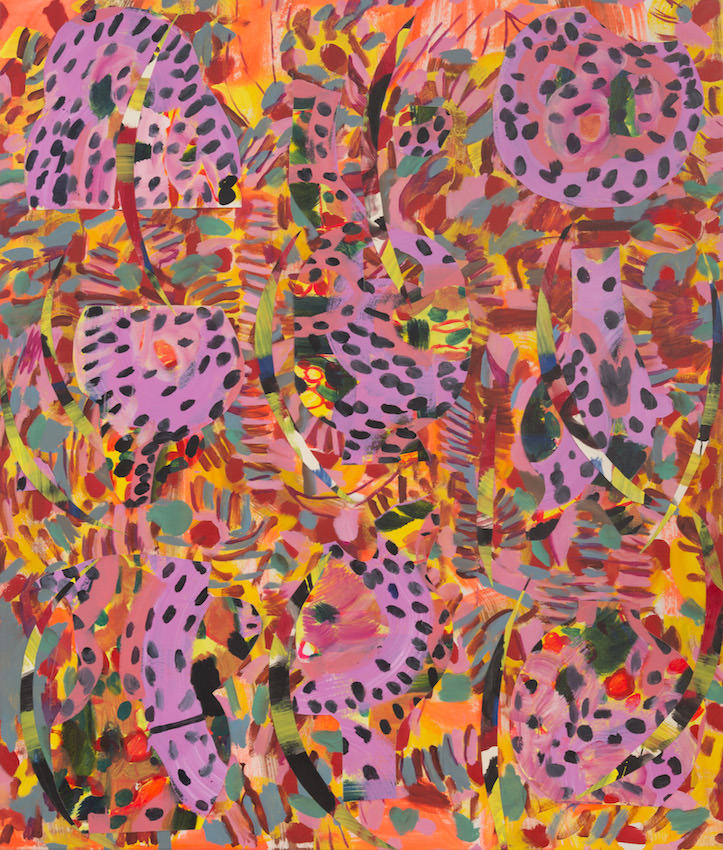
Ali Silverstein
July 5, 2016 (Jungle Pink)
2016
Acrylic and canvas with paper on canvas
80 1/4 x 68 1/4 inches
Courtesy of the artist and Albertz Benda
Photo by Adam Reich
AS: When I met Kasha, which is the name of this Dominatrix, she was really interested in expanding our range of acceptability, particularly that of women. Essentially, to teach people how to legitimize their desires, which was what I was trying to do with painting. What I found out for me which is probably true of everyone is that you have this really known range of acceptability: You’re skinny until you’re too fat, you’re a prude until you’re a slut, you’re too shy until you’re too social . . . Everyone is trying to squeeze themselves into this slight place where it is almost impossible to exist, walking around with disowned desires, desires that they don’t think are legitimate or acceptable, or these vague ideas. You start to define the things that you really want and it’s almost like you’re drawing in a line of your body that was kind of just sketchy before.
WW: How did you incorporate dominatrix practices to your painting process?
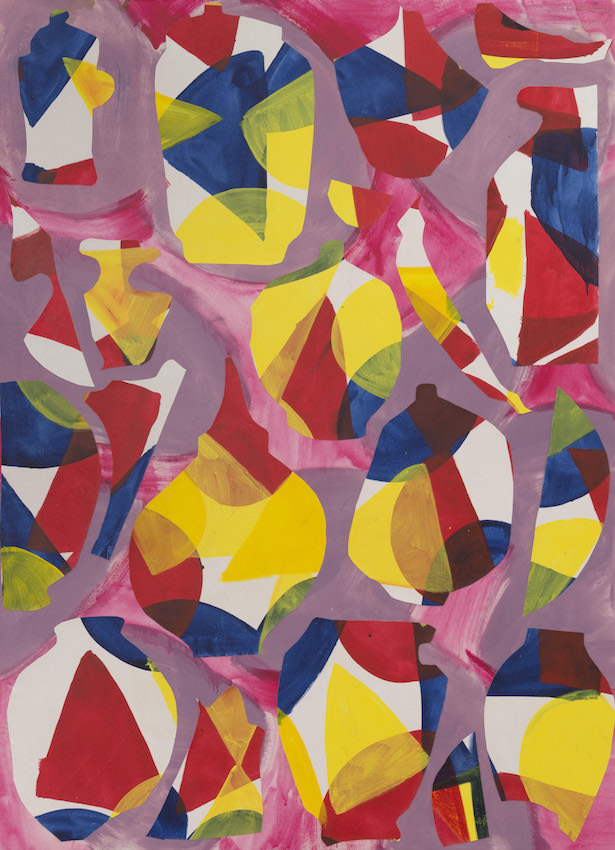
Ali Silverstein
August 21, 2016 (Red, fluorescent orange vessels)
2016
Acrylic and canvas with paper on canvas
80 x 65 3/4 inches
Courtesy of the artist and Albertz Benda
Photo by Adam Reich
AS: I took her course in power dynamics for women, so how to be a dominator and how to be submissive, which was really intense. [Laughs] On one occasion I left and just went crying outside, because it was really challenging stuff. I had boundaries I didn’t know I had, but it’s all been absorbing over time and taking what I’ve learned back to the studio . . .
For example, I watched her working with a guy, a man in a collar and a leash, and she asked him to bark like a dog in front of 30 women in the class. You could see the absolute terror on his face and this look of “There’s no way I can do that,” and just pure terror. She started barking at him, so he started barking a little back, and all of a sudden they’re completely barking at each other. It was incredible to see someone go from total impossibility, shame, and terror and transcended this limitation. The same thing happens with painting: You hit those areas of shame where you think, “If I do this thing, which is naturally coming up with me to do, I might ruin this painting, make something ugly or stupid,” which is a natural self-reflection and I have to be my own dominatrix and negotiate my own resistance.
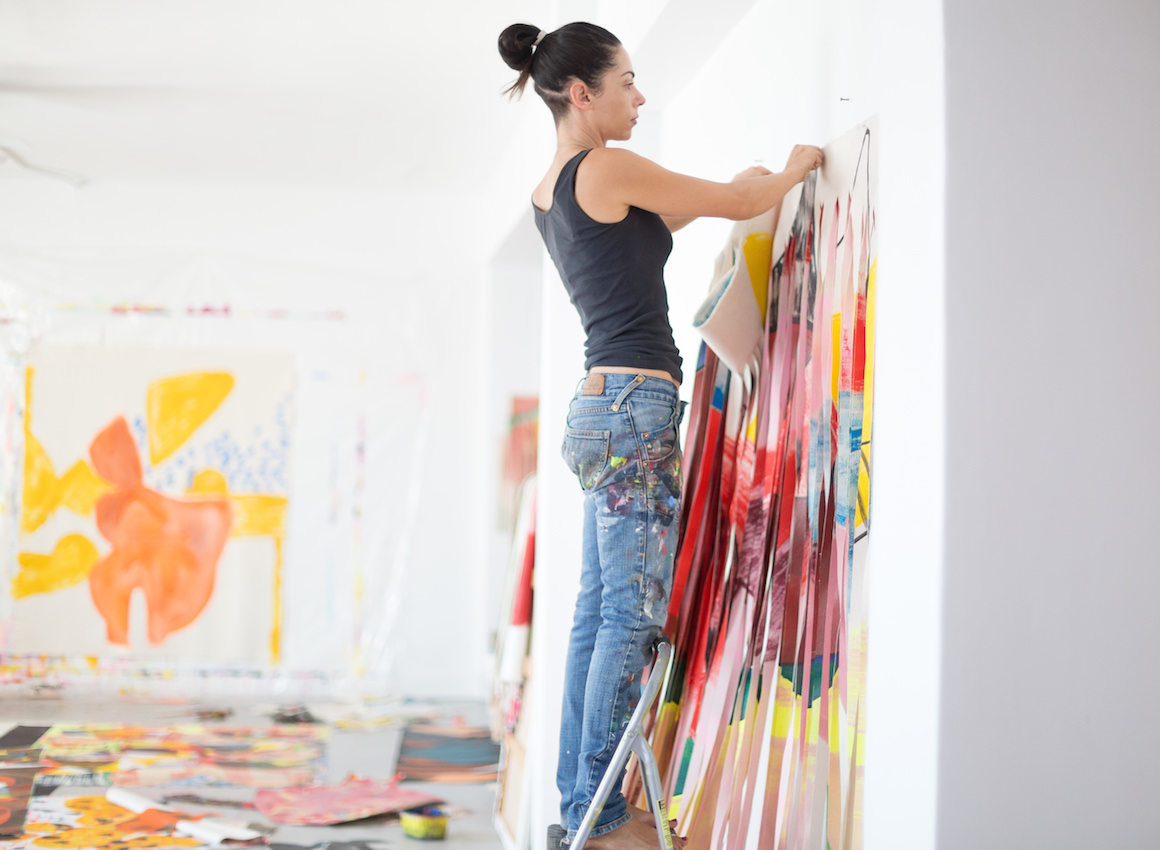
Photo by Christopher Burke, courtesy of Albertz Benda and the artist.
This article appears in Whitewall‘s spring 2017 Women in the Arts issue.









